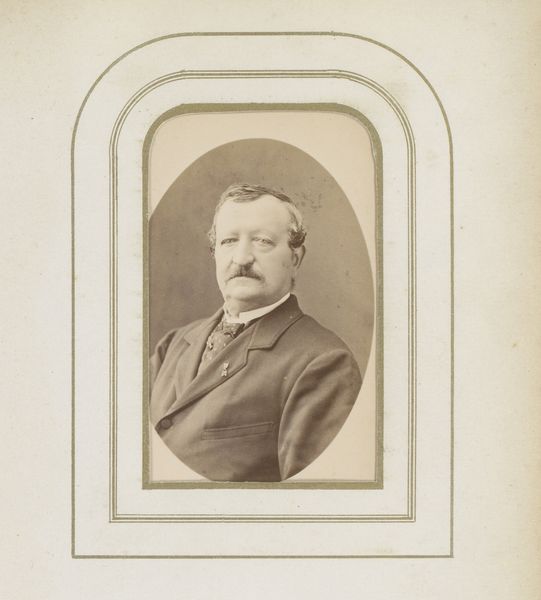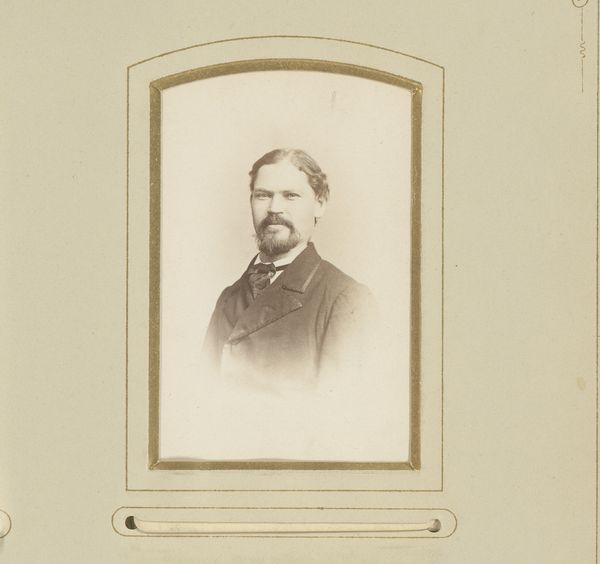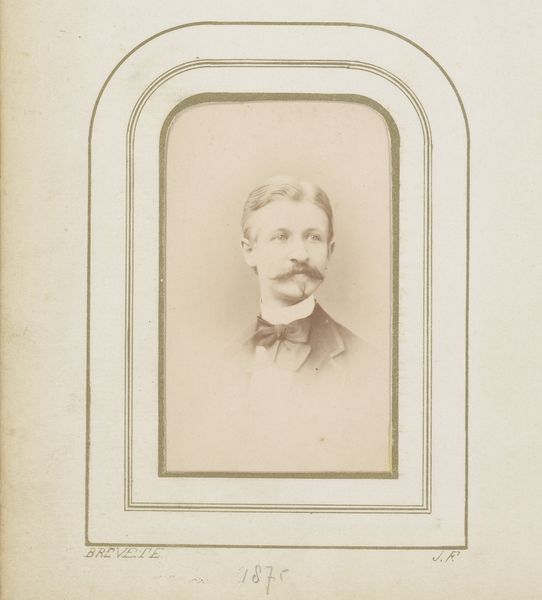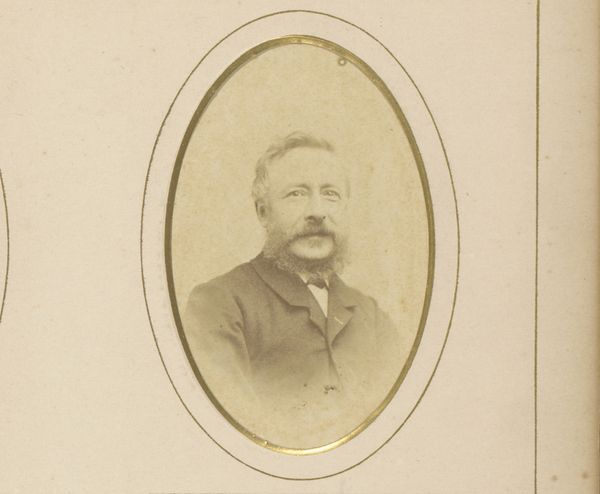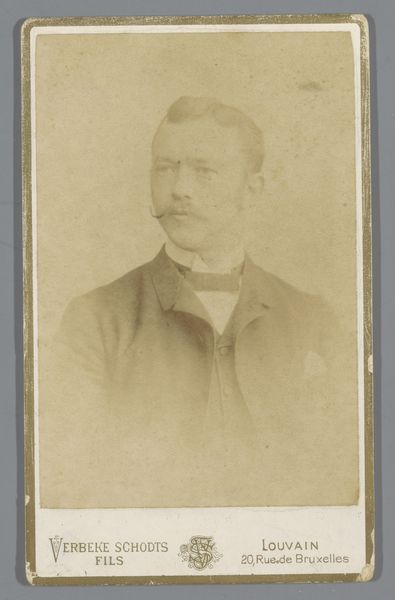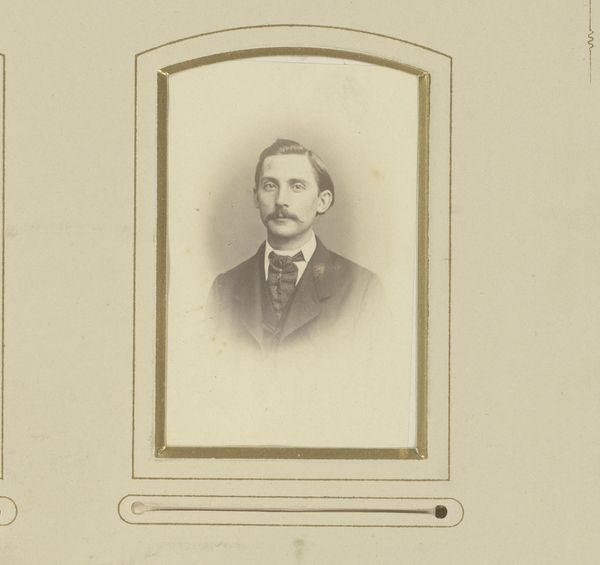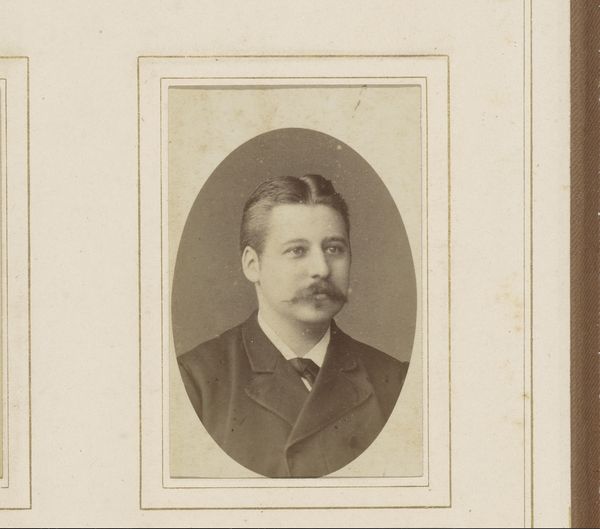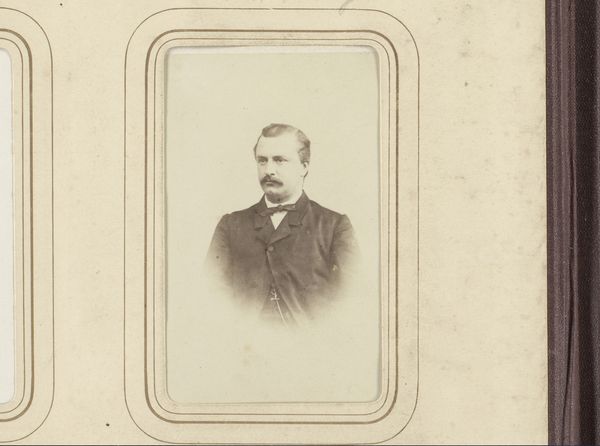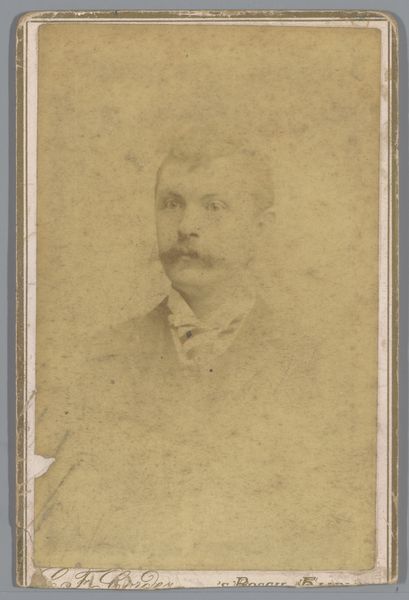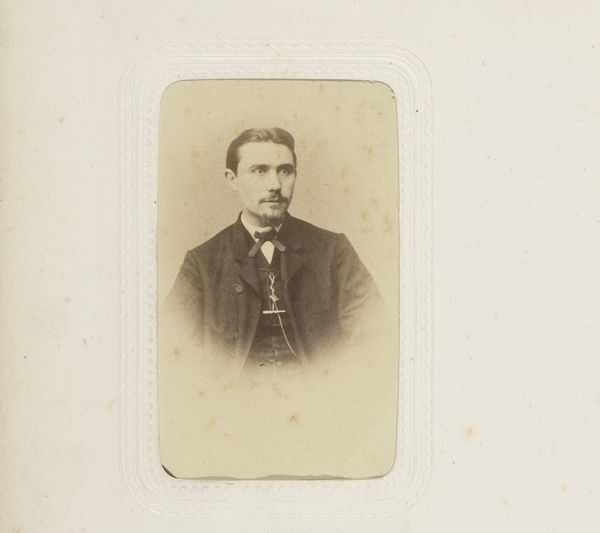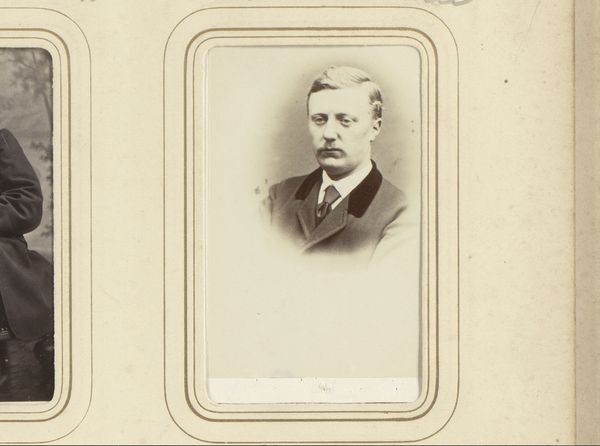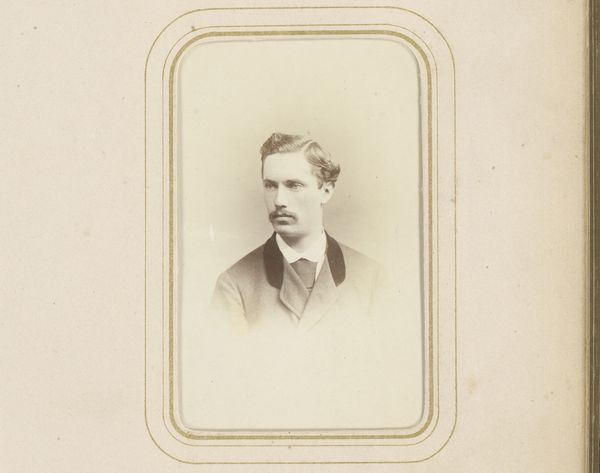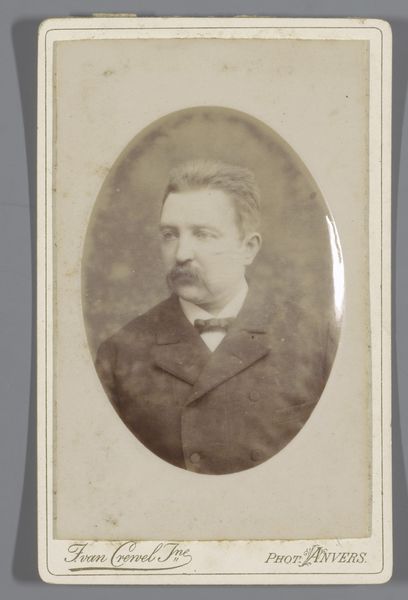
#
toned paper
#
charcoal drawing
#
charcoal art
#
portrait reference
#
unrealistic statue
#
framed image
#
portrait drawing
#
tonal art
#
watercolor
#
fine art portrait
Dimensions: height 83 mm, width 50 mm
Copyright: Rijks Museum: Open Domain
Curator: This piece, simply titled "Portret van een man met snor"—or "Portrait of a man with a mustache"—is believed to have been made sometime between 1863 and 1890. Editor: Wow, that mustache is declaring itself, isn't it? It feels very proper, buttoned-up… and yet, something about his eyes hints at a suppressed giggle, maybe? It’s lovely, though, the sepia tones create such a soft and reflective mood. Curator: Sepia tones certainly define much portraiture of this era. The technology of photography, still relatively new, heavily influenced portraiture at all levels of society. While we don't have definitive records of the artist of this work, these portraits of the era reveal the values around self-representation—decorum, prosperity. Editor: Decorum is right. It's funny to think of him meticulously grooming that mustache before posing. I wonder what stories those whiskers could tell. The detail is beautiful—it gives the subject a weightiness that makes him feel really present, and real. He probably had kids. He looks like the patient father of like, four unruly kids. Curator: We do know it's crafted using watercolor and charcoal on toned paper, a medium that lends itself to soft gradations of light and shadow, giving the piece a real visual depth. This was an accessible method for portraiture beyond oil paints. Editor: Which tells us about its consumption—a kind of accessible aspiration, this democratization of the portrait. Though the slightly stern look and formal attire certainly still hold an ambition, a reach beyond everyday life. He is not messing about, not breaking character. I wonder what a candid version would look like? Curator: This portrait exists in a liminal space of aspiration but also affordability. Photography may have been new but it was being adapted as quickly as technology and consumer culture of the 19th century allowed. The very materials tell that story of expanding possibility. Editor: Right—possibility! And a quiet intensity. Looking at it now, I can almost hear the clinking of glasses at a stuffy dinner party. It has drawn me in completely! Curator: It reminds us of the narratives art creates, intentionally or not, by documenting an age. Editor: Exactly. Each careful line whispers secrets, if only we learn to listen!
Comments
No comments
Be the first to comment and join the conversation on the ultimate creative platform.
